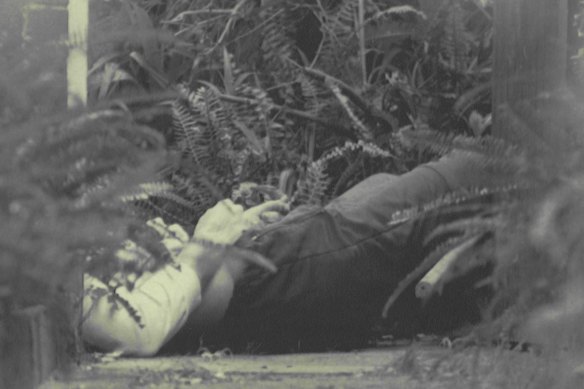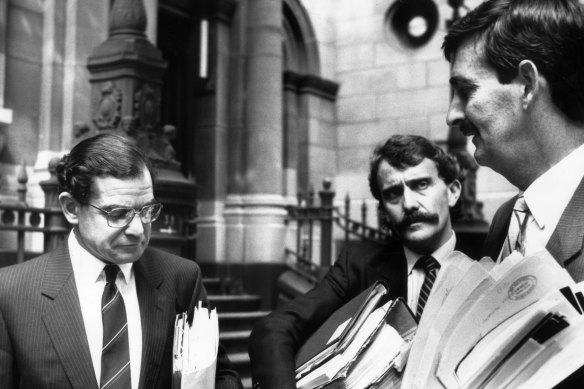This was published 3 years ago
‘It was a nightmare’: The police shooting of fugitive Arthur Nelson
The Naked City podcast takes a journey into the dark depths of the Australian criminal underworld. In this series you will hear recordings of some of Australia’s most dangerous criminals, all of whom have been remarkably frank in their recollections.
Lachlan McCulloch was a private school boy from a privileged background who wanted to be a policeman and in 1984 graduated from the Police Academy 22nd out of a squad of 25.
On the road he proved to be a quick learner and soon earned a reputation as a first-class crook catcher.
Arthur James Nelson, on the other hand, was a third-rate crook who had convictions for burglary, theft, assault, false pretences and drugs. When in July 1988 his path fatally crossed that of Lachlan and another policeman, Syd Hadley, he was facing no fewer than 84 charges.
Nelson had been on the run after escaping from a remand centre in Canberra and heading to St Kilda to score drugs.
Nelson had told his associates he had no intention of returning to prison and would rather be shot by police. He would get his wish.
Needing money to score again, he decided to burgle a house for cash and electrical goods. The area he chose was a hotspot for burglaries with 50 hits in recent months by what was thought to be the same gang.
As a result police were running a special operation codenamed Gasp.
Nelson was spotted by an unmarked police car that tried to block his way. Nelson veered on the footpath and sped off. Police including Hadley and McCulloch converged on the scene.
Nelson wanted to go down fighting. He grabbed a sharpened garden stake and launched himself at the police.
McCulloch swung his gun on Nelson and was squeezing the trigger when he heard a bang. He wasn’t sure if he or Hadley had been shot by the offender. But it was Hadley who had fired a single shot, killing Nelson instantly.

The body of a man shot by police on July 27, 1988.Credit: Police
The death of Nelson came during a period in Victoria’s police history when they were killing more suspects than the rest of Australia combined.
In 10 years from 1984 Victoria Police shot and killed 31 people. Each was considered lawful on the grounds of self-defence, but coroner Hal Hallenstein wanted to know if they were avoidable.
Hallenstein held a “super-inquest” into seven deaths, including Nelson’s, and found police had developed a “culture of bravery” where they felt compelled to take action no matter what the risk.

Coroner Hal Hallenstein (left) found Victoria Police in the grip of a "culture of bravery".Credit: The Age
Eventually police changed tactics through Project Beacon, whereby officers were taught to cordon and contain and see safety as the No.1 priority. Now, with the threat of terrorism, police have returned to direct action, in which the first officers at the scene must act. The wheel has turned.